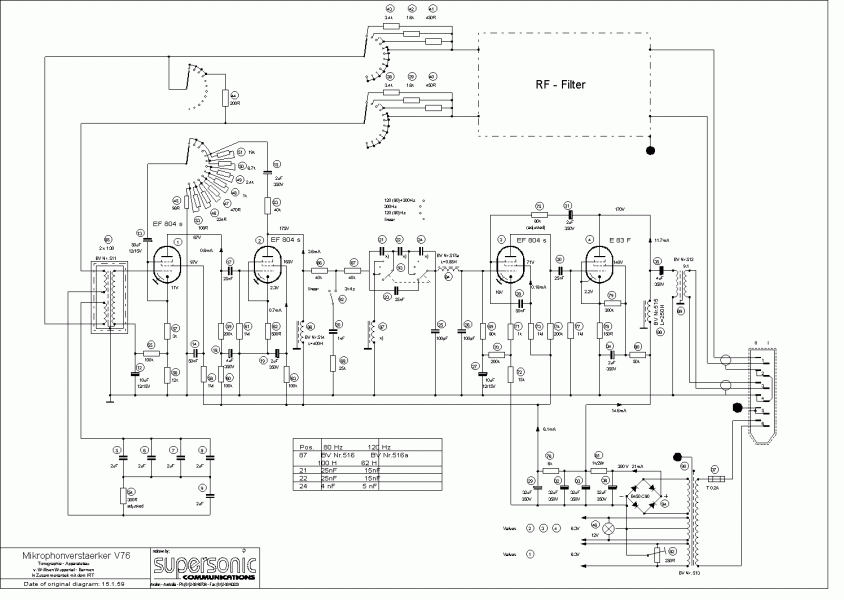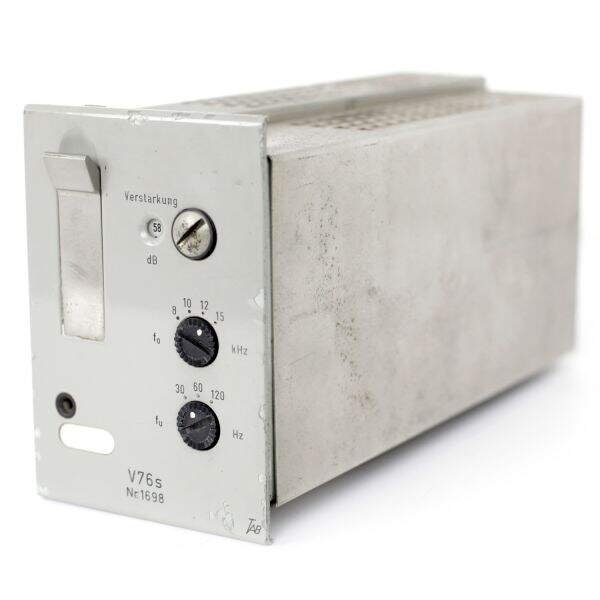RIAA bass +20db /20hz high-20 db/20khzthe difference between the BAT phono and tape pre would just be the eq curve......
NAB bass +8db /20hz high -16db /20khz
CIRR bass flat 0db high 14-16 /20khz
taken from the head please correct if i'm wrong
RIAA bass +20db /20hz high-20 db/20khzthe difference between the BAT phono and tape pre would just be the eq curve......
That is correct... ideally I wish I had a bit more gain, but it is OK for what I am doing.the difference between the BAT phono and tape pre would just be the eq curve......
Yes, I agree.SEIDENs are pretty good imo
Thank you. Hmm, do I need another tape deck. I have no room. But it sure would be nice to make a good mix tape.If going tube the Ampex 351 electronics are excellent. They must be properly refurbished and you might want to change the EQ from NAB to IEC1 or IEC2. I've seen the 351 electronics used with the Ampex 300, 350 and 440 transports. These transports are not gentle with tapes so you have to learn a technique called 'magnetic braking' and there are no tape counter or search functions.
If solid state I would look at a Studer, like the A80. Otarai made some nice machines as well.
So I started looking and the Ampex 351 is an external electronic. If I were to pair it with say an Otari, I am seeing on this page that the Japanese record heads on the Otari are not that good. I was hoping for an all in one, this is a good unit for a reasonable price that is optimized for recording. The playback is less important.If going tube the Ampex 351 electronics are excellent. They must be properly refurbished and you might want to change the EQ from NAB to IEC1 or IEC2. I've seen the 351 electronics used with the Ampex 300, 350 and 440 transports. These transports are not gentle with tapes so you have to learn a technique called 'magnetic braking' and there are no tape counter or search functions.
If solid state I would look at a Studer, like the A80. Otarai made some nice machines as well.
2 pole 3 position switch make before breakSEIDENs are pretty good imo


If its fairly easy to add a tape selector switch / tape EQ curve , why isnt it added to the phonostage by most manufacturers.That is correct... ideally I wish I had a bit more gain, but it is OK for what I am doing.
I have had experiences with different coupling caps in my power amps, which drive the midrange horn drivers directly at a sensitivity of 111dB/W. It is always the coupling caps that get noisy first. I have gone through a range of boutique brands, and most of them don't last more than a year or two before they become noisy. I guess with speakers at "normal" sensitivity of 90dB/W or thereabouts, this poses no problem, but in my system, this is a real pain. And I am using 630VDC caps with a B+ of only 450V. I even had a cap shorting out and destroying one of my Takatsuki 300Bs, which was the last straw. At the end, I put in Wima FKP caps, and they are so quiet. Residual noise went from 3mV with other caps down to <1mV. Much cheaper too.There are many interesting choices, unfortunately one of our applications calls for pretty high voltage. Jensen paper in oil caps handled it with no issues, while sounding good. But most modern parts have relatively low limits.
I use latching relays to switch between EQ circuits, actually soldering the caps and resistors directly onto the pins of the relay. Works pretty well for me.We've built a few of our preamps with switchable tape EQ. Tape opens the door to EQ- some tapes are NAB, some IEC1 (CCIR) and newer ones IEC2. IME coming up with a worthy selector switch was one of the bigger issues. We had to get ours custom built.
I have had experiences with different coupling caps in my power amps, which drive the midrange horn drivers directly at a sensitivity of 111dB/W. It is always the coupling caps that get noisy first. I have gone through a range of boutique brands, and most of them don't last more than a year or two before they become noisy. I guess with speakers at "normal" sensitivity of 90dB/W or thereabouts, this poses no problem, but in my system, this is a real pain. And I am using 630VDC caps with a B+ of only 450V. I even had a cap shorting out and destroying one of my Takatsuki 300Bs, which was the last straw. At the end, I put in Wima FKP caps, and they are so quiet. Residual noise went from 3mV with other caps down to <1mV. Much cheaper too.
Some years back I made a recording and used two machines running at the same time to make dual master tapes. One was an Otari (I do not recall which one, but it was a 2-channel 1/4" machine with balanced and single-ended inputs) and the other a modified Ampex using the stereo 354 electronics, run by an outboard tube regulated power supply. At the end I had two master tapes. The one on the Otari sounded quite good but sounded better on the Ampex. The Ampex tape played back on the Otari sounded better than the Otari tape played on that machine. Ultimately the Ampex tape played on the Ampex machine sounded the best. That was the one we used for the LP and CD release.So I started looking and the Ampex 351 is an external electronic. If I were to pair it with say an Otari, I am seeing on this page that the Japanese record heads on the Otari are not that good. I was hoping for an all in one, this is a good unit for a reasonable price that is optimized for recording. The playback is less important.
If I were to pair it with an Ampex deck, I guess the tape handling is not that big a deal. I would only be loading a reel, filling it piece by piece. It would be new tape. When I was done the tape would be played back on the Otari with outboard preamp.
FWIW with the Otari, when I want to stop the tape, I hit FF, let it come to a stop, then hit stop when the tape is not moving. I wish the otari had a Library rewind. It is really hauling tape when its near the end. I hate to let it just wind out as it spins slapping the tape for too long.
Some years back I made a recording and used two machines running at the same time to make dual master tapes. One was an Otari (I do not recall which one, but it was a 2-channel 1/4" machine with balanced and single-ended inputs) and the other a modified Ampex using the stereo 354 electronics, run by an outboard tube regulated power supply. At the end I had two master tapes. The one on the Otari sounded quite good but sounded better on the Ampex. The Ampex tape played back on the Otari sounded better than the Otari tape played on that machine. Ultimately the Ampex tape played on the Ampex machine sounded the best. That was the one we used for the LP and CD release.
| Steve Williams Site Founder | Site Owner | Administrator | Ron Resnick Site Owner | Administrator | Julian (The Fixer) Website Build | Marketing Managersing |

